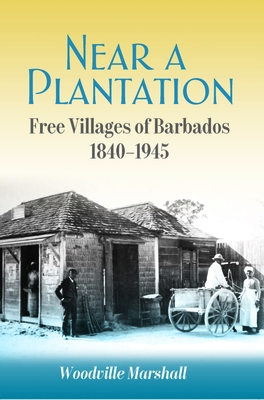Near a Plantation: Free Villages in Barbados, 1905-1945

Near a Plantation: Free Villages in Barbados, 1905-1945
contrary to general belief, free villages were established in Barbados soon
after the end of the Apprenticeship in 1838. The term "free villages" is employed in the way that it was coined by
its author, William Knibb, Baptist missionary in Jamaica. He said in November
1838 that such villages were to be the blacks' routes of escape from their
"inveterate enemies"; the emancipated black man could use the village as an "asylum" from which he
could "defy them with scorn, and go to any estate he pleases to work".
Therefore, the fact that as many as 69 such settlements could be found within
thirty years in small, densely populated Barbados suggests that the scenario
which was being played out in less densely populated territories was not absent
from Barbados. Indeed, there is evidence to suggest that every opportunity was
being exploited by blacks to acquire land that they could control and therefore
escape the restrictions of conditional tenancy on planters' lands. However, free village development in
Barbados can be seen as a variant. Unlike elsewhere in the Caribbean, free
villages could not be equated with the emergence of a small farmer class of
significant size. In Barbados, the average size of holding was less than one
acre, which meant that the vast majority of the villagers had to find regular
employment as agricultural labourers on the plantations. Therefore, by 1945,
while free villages housed a majority of the rural population, that population
was forced to remain close to the plantation, not merely because of the size of
the island, but because the plantations were the main source of employment. In
this way, free village development in the island did not adversely affect
labour supplies on the plantations.
232.50Lei
232.50Lei
Livrare in 2-4 saptamani
Descrierea produsului
contrary to general belief, free villages were established in Barbados soon
after the end of the Apprenticeship in 1838. The term "free villages" is employed in the way that it was coined by
its author, William Knibb, Baptist missionary in Jamaica. He said in November
1838 that such villages were to be the blacks' routes of escape from their
"inveterate enemies"; the emancipated black man could use the village as an "asylum" from which he
could "defy them with scorn, and go to any estate he pleases to work".
Therefore, the fact that as many as 69 such settlements could be found within
thirty years in small, densely populated Barbados suggests that the scenario
which was being played out in less densely populated territories was not absent
from Barbados. Indeed, there is evidence to suggest that every opportunity was
being exploited by blacks to acquire land that they could control and therefore
escape the restrictions of conditional tenancy on planters' lands. However, free village development in
Barbados can be seen as a variant. Unlike elsewhere in the Caribbean, free
villages could not be equated with the emergence of a small farmer class of
significant size. In Barbados, the average size of holding was less than one
acre, which meant that the vast majority of the villagers had to find regular
employment as agricultural labourers on the plantations. Therefore, by 1945,
while free villages housed a majority of the rural population, that population
was forced to remain close to the plantation, not merely because of the size of
the island, but because the plantations were the main source of employment. In
this way, free village development in the island did not adversely affect
labour supplies on the plantations.
Detaliile produsului










